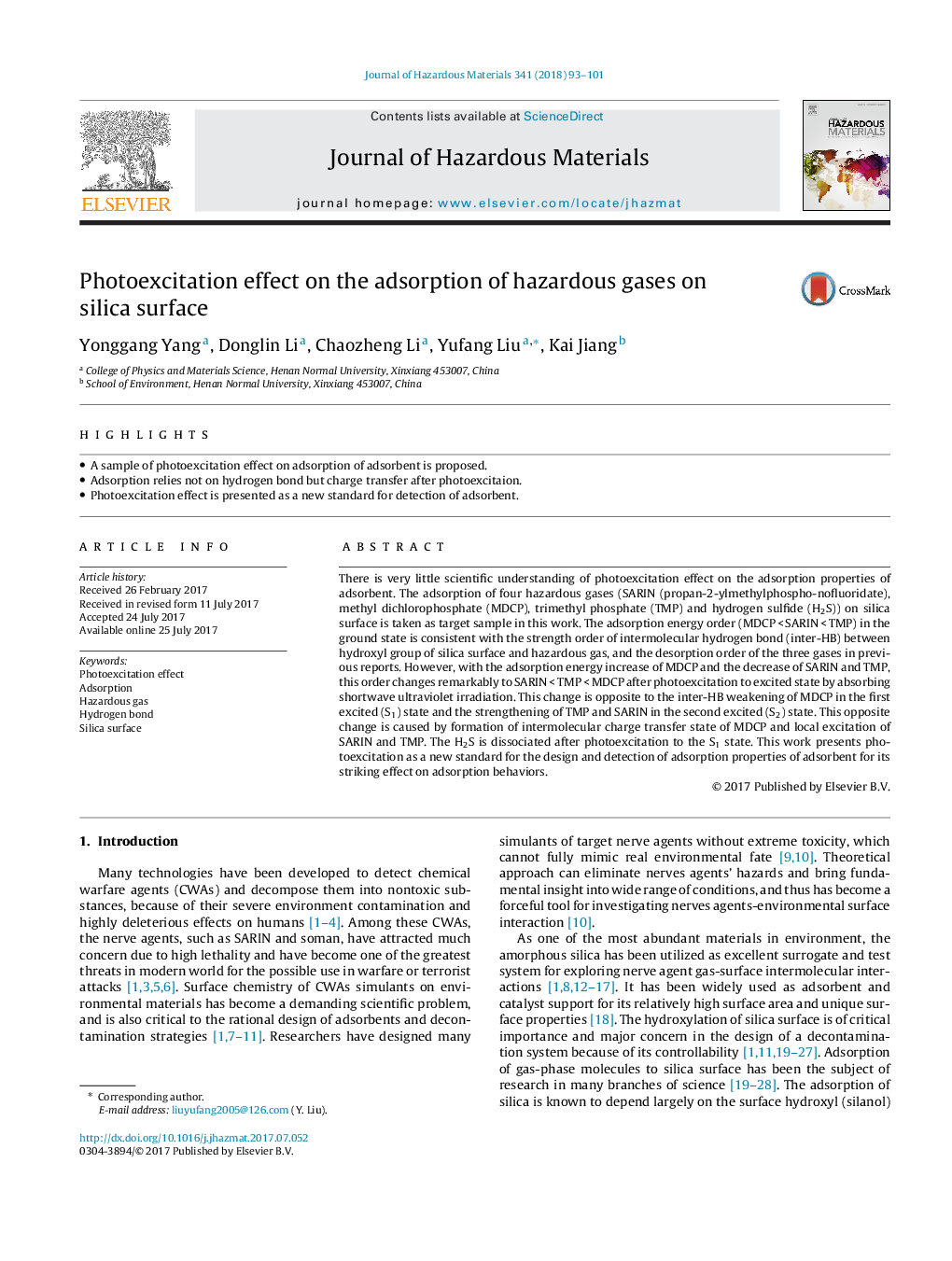| کد مقاله | کد نشریه | سال انتشار | مقاله انگلیسی | نسخه تمام متن |
|---|---|---|---|---|
| 4979252 | 1453022 | 2018 | 9 صفحه PDF | دانلود رایگان |
- A sample of photoexcitation effect on adsorption of adsorbent is proposed.
- Adsorption relies not on hydrogen bond but charge transfer after photoexcitaion.
- Photoexcitation effect is presented as a new standard for detection of adsorbent.
There is very little scientific understanding of photoexcitation effect on the adsorption properties of adsorbent. The adsorption of four hazardous gases (SARIN (propan-2-ylmethylphospho-nofluoridate), methyl dichlorophosphate (MDCP), trimethyl phosphate (TMP) and hydrogen sulfide (H2S)) on silica surface is taken as target sample in this work. The adsorption energy order (MDCPÂ <Â SARINÂ <Â TMP) in the ground state is consistent with the strength order of intermolecular hydrogen bond (inter-HB) between hydroxyl group of silica surface and hazardous gas, and the desorption order of the three gases in previous reports. However, with the adsorption energy increase of MDCP and the decrease of SARIN and TMP, this order changes remarkably to SARINÂ <Â TMPÂ <Â MDCP after photoexcitation to excited state by absorbing shortwave ultraviolet irradiation. This change is opposite to the inter-HB weakening of MDCP in the first excited (S1) state and the strengthening of TMP and SARIN in the second excited (S2) state. This opposite change is caused by formation of intermolecular charge transfer state of MDCP and local excitation of SARIN and TMP. The H2S is dissociated after photoexcitation to the S1 state. This work presents photoexcitation as a new standard for the design and detection of adsorption properties of adsorbent for its striking effect on adsorption behaviors.
Journal: Journal of Hazardous Materials - Volume 341, 5 January 2018, Pages 93-101
